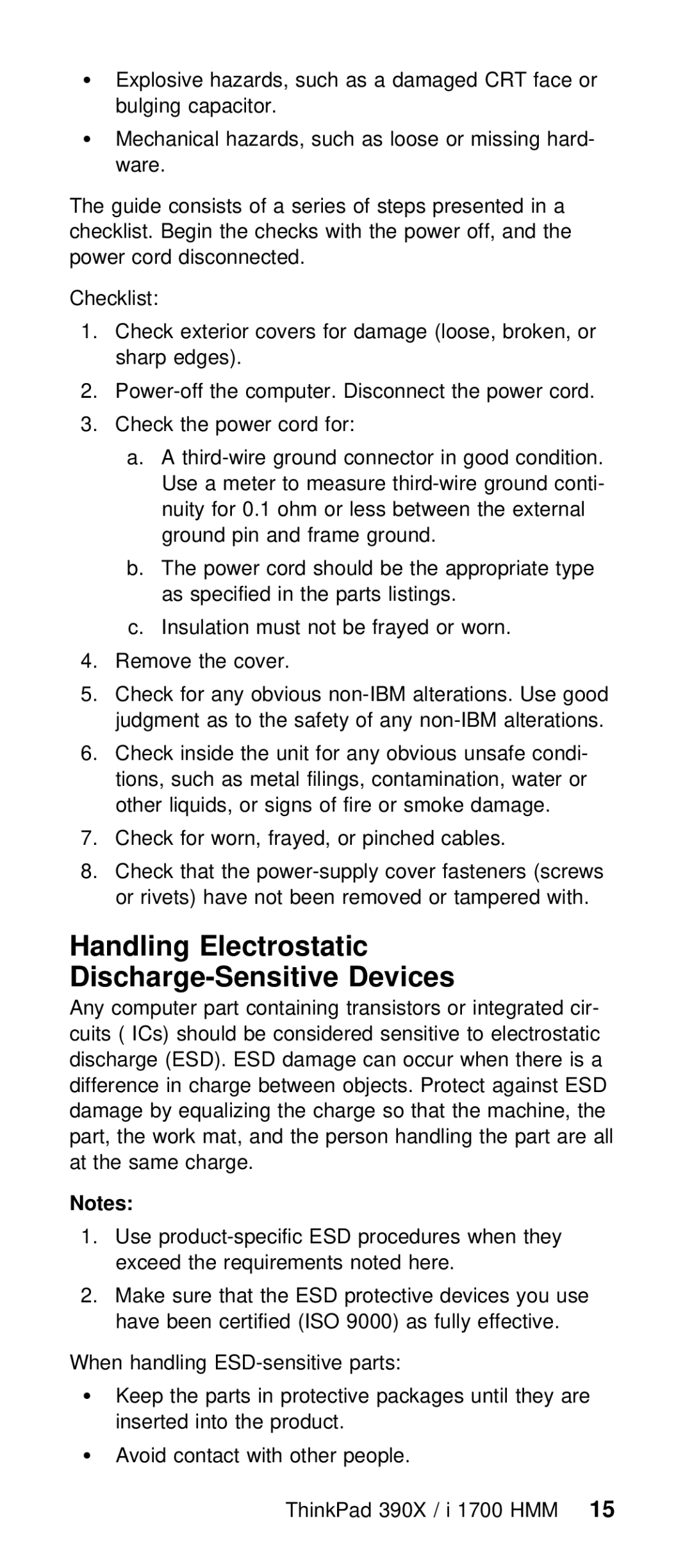ŸExplosive hazards, such as a damaged CRT fa bulging capacitor.
ŸMechanical hazards, such as loose or missing ware.
The guide consists of a series of steps prese checklist. Begin the checks with the power off, power cord disconnected.
Checklist:
1.Check exterior covers for damage (loose, b sharp edges).
2.
3.Check the power cord for:
a. A
b. The | power cord | should be | the appropria |
as | specified in | the parts | listings. |
c. Insulation must not be frayed or worn.
4.Remove the cover.
5.Check for any obvious
judgment as to the safety of any
6. Check inside the unit for any obvious unsafe tions, such as metal filings, contamination, wat other liquids, or signs of fire or smoke da
7. | Check | for | worn, | frayed, | or pinched | cables. |
8. | Check | that | the | |||
| or rivets) | have | not been | removed or | tampered | |
Handling Electrostatic
Discharge-Sensitive Devices
Any computer part containing transistors or integra cuits ( ICs) should be considered sensitive to discharge (ESD). ESD damage can occur when there difference in charge between objects. Protect damage by equalizing the charge so that the m part, the work mat, and the person handling the at the same charge.
Notes:
1.Use
2.Make sure that the ESD protective devices have been certified (ISO 9000) as fully eff
When handling
ŸKeep the parts in protective packages until
inserted into the product.
ŸAvoid contact with other people.
ThinkPad 390X / i 1700 15HMM
